Abernant Farm Kemeys Inferior
Ruined 16th century farm
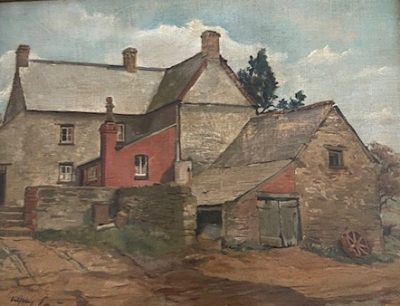
Today, Abernant Farmhouse stands in ruins, its once-thriving lands long since redeveloped for a golf course and a bypass. However, for more than 300 years, Abernant was one of the largest and most prosperous farms in the area. While often associated with Caerleon, Abernant is actually situated in Kemeys Inferior on Bulmore Road, which was once the high road from Newport to Chepstow.
Kemeys Inferior is an ancient parish and hamlet in Monmouthshire, located three miles northeast of Caerleon and six and a half miles southwest of Usk. The part of the parish closest to the River Usk belongs to the Usk Hundred, while the remainder falls within the Caldicot Hundred. The parish is best known for an 18th-century folly, built in 1712 by local landowner George Kemeys. Converted into a luxury home in 2007, the folly was later featured on the TV property show Grand Designs.
The Origins of Abernant Farm
A 21st-century survey of Abernant Farm helped establish the likely age of the property. The farmhouse was described as an early 18th-century building, ‘L’-shaped in design, with two and a half floors. The survey also identified a 16th-century stone core within the structure. The farm complex included a ‘U’-shaped range of 18th- and 19th-century stone outbuildings, along with more modern additions.
A historical account from 1846 provides further insight into Abernant’s past, describing the farm as consisting of stables, barns, outbuildings, yards, gardens, and various appurtenances. The property also included fields known as Beech Tree Ground, The Thole, The Dingle, and Cock Short, among others. At the time, the farm covered 273 acres and was available to rent for £410 per year. The tenant was Matthew Cope, while the farm remained under the ownership of the Kemeys Estate. Census records show that Matthew and his family were still living at Abernant in 1851.
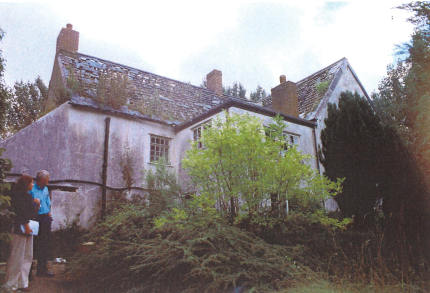
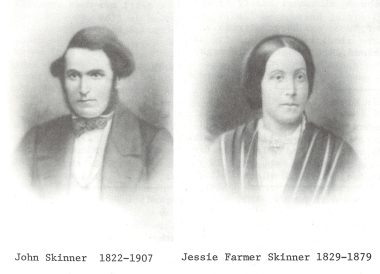
The Skinner’s at Abernant
In the 1850s, the Skinner family took over the tenancy of Abernant, marking the beginning of an 80-year legacy. The first tenant was John Skinner from Fife and his wife Jessie. The decision to grant this prized tenancy to a Scot would not have been popular locally, but landowners were said to favour skilled Scottish farmers as tenants. John was followed as the head of Abernant by his son James Skinner, and finally his grandson Donald Skinner.
Newspaper archives highlight the family’s dedication to farming. John Skinner won numerous prizes for cattle and poultry breeding, while his 17-year-old daughter, Margaret, received awards for her ducks and geese. A Monmouthshire Merlin advertisement also noted that John bred first-class horses at Abernant, including Young Dalesman.
In 1868, John Skinner organised a ploughing contest at Abernant, an event that attracted influential spectators and generated significant local interest. The farm won two prizes in the ‘swing plough’ category. John Skinner left Abernant in 1893 to live with his second wife in Cats Ash, he sold all of his stock before handing the tenancy to his son, James and his wife Rosa.
The 1901 census records James Skinner as the head of the household and employer, he lived at Abernant with his wife and children. James was a prominent member of the local Farmers’ Union and an innovative farmer, diversifying Abernant’s operations to include award-winning cheese production. We believe from letters written by James to his brother in America that he turned down an opportunity to purchase the property and continued as tenant. When James passed away in 1927, his son Donald Skinner became the third generation to manage the farm.
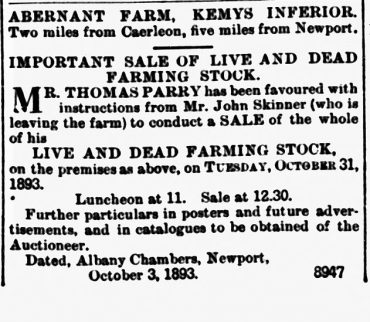
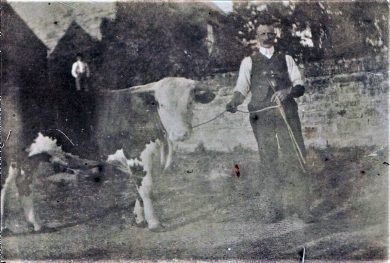
By the time of the 1939 Register, Donald Skinner was listed as Master Farmer at Abernant, running the farm alongside his wife, Catherine. He was assisted by his brother Ray, a butcher, and Charles Duffield, a cowman. The farm had significantly reduced its output, and Donald also spent time working away from Abernant on land near Caerleon.
In 1940, with Donald struggling with poor health, he and Catherine made the difficult decision to leave the farm with their two young daughters, ending the Skinner family’s long association with Abernant. They later settled in Langstone, where Catherine ran the local dairy and Donald tended his smallholding. In later life Donald would talk about how he missed the lands of Abernant.
The Haines Family
After the Skinners left, Edgar and Iris Haines took over the tenancy of Abernant in 1940, running it as a dairy farm until 1956. Advertisements from June 1940 indicate they were looking to hire farm workers. While living on the farm, they welcomed two children – Trevor in 1943 and Doreen in 1945 – That same year, following the death of landowner John Williams Esq., the 187-acre Abernant Farm was sold at auction. Despite the change in ownership, Edgar and Iris continued as tenants.
Later, after purchasing Draenllwyn Farm, they began hiring managers to help run Abernant. Ivor and Betty Howe were the first of several managers to oversee its operations. Edgar and Iris last appeared on the Electoral Register at Abernant in 1955 before moving to Woodville in nearby Cats Ash with their children, where they continued farming. On September 6th 1956, a sale was held for Abernant’s stock and equipment, which included 34 dairy cattle, 115 sheep, and an active cart mare.
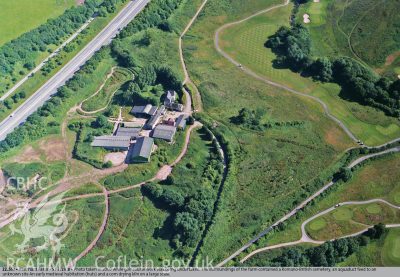
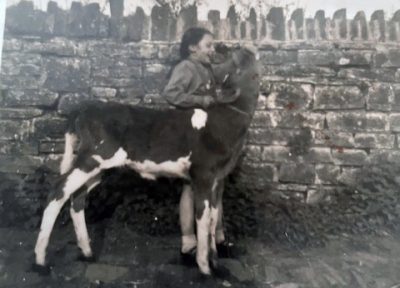
New Owners at Abernant
Ron and Enid Haines took over the Abernant tenancy in 1965 and eventually purchased the freehold in 1968. In the 1960s they received a visit from John Louis Skinner and his wife Jean. They had travelled from America to Monmouthshire in search of their grandfather’s ancestral roots. During their visit, they stopped at Abernant, where they were warmly welcomed by the Haines family, an experience fondly remembered in a book about the Skinner family, which described Mr. and Mrs. Haines as “very special people.” This was their description of the farm kitchen.
“In the old kitchen there is a beautiful old stone fireplace with a flue, beautifully finished white oak beam across its top with a separate chamber adjacent to it and iron hooks to hang meats to smoke. The ceiling in the room has hand hewn beams complete with a few worm holes now. This had been enclosed, leaving what looked like a tiny fireplace in this small room. The present owners were bothered by mice in the room and decided to investigate the small fireplace area. When they started tearing away the remodelling over the fireplace, they couldn’t stop and were so pleased by their discovery of this stone walled ancient kitchen.”
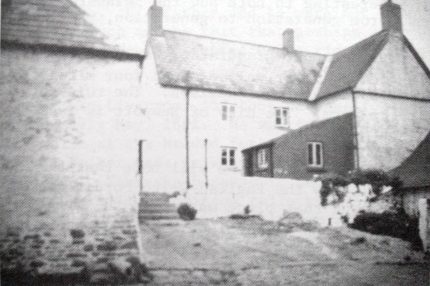
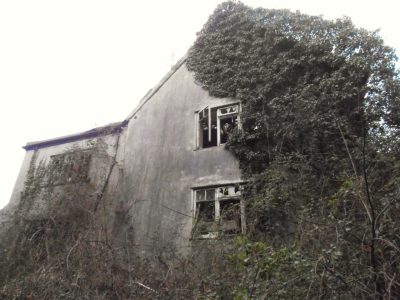
Abernant’s Final Chapter
During the 1970s, part of the farm’s land was used for the construction of the A449 road. In the 1990s, excavation work around the farmhouse uncovered significant Roman artifacts, including a Roman kiln (recorded in 1996), a stone cist, and nine Roman graves behind the farm buildings. The graves were possibly of the 3rd century AD and were in area of roughly 25m by 12m, set on ground falling to the west.
In 2003, the Celtic Manor Resort purchased Abernant farmhouse and the remaining land from Ron and Enid for £45 million to develop a new golf course, they had spent 38 years at Abernant. The land was soon transformed into The Twenty Ten course, built to host the 2010 Ryder Cup. The farmhouse itself was left abandoned, gradually falling into dereliction. By 2005, with the site facing possible demolition, the Royal Commission on the Ancient and Historical Monuments of Wales commissioned a survey of the farm, recognising its historical significance. Conducted by Geoff Ward, the survey included 19 striking images of the decaying buildings.
Abernant Today
As of 2025, Abernant Farmhouse and its outbuildings still stand, accessible to the public via a footpath. However, after two decades of abandonment, exposure to the elements, vandalism, and urban exploration have taken their toll. Nature is steadily reclaiming the site, and the structures are now at risk of collapse. Despite its deteriorating state, Abernant’s rich history – spanning centuries of agricultural success, family legacies, and archaeological discoveries – remains a powerful testament to its past significance.
We have been fortunate to visit the farm on multiple occasions, and despite the crumbling buildings, it retains a unique and almost tranquil atmosphere. With both our mother and grandfather born there, each visit deepens our connection to our family’s past.
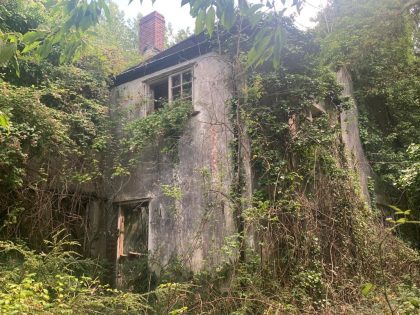
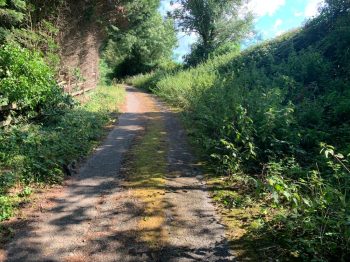
In our exploration of Abernant’s history, we were delighted to connect with the Haines family, who generously shared their own memories. Even more remarkable, we discovered that Enid Haines, well into her 80s and widowed, is still farming – a testament to the resilience and enduring spirit of those who have called Abernant home. What the future holds for Abernant Farm in Kemeys Inferior remains uncertain. For now, however, it continues to stand, a proud and poignant reminder of the generations who lived and worked there.
Something to add to the story of Abernant Farm? Please email us: research@skinnerfamilyhistory.com
